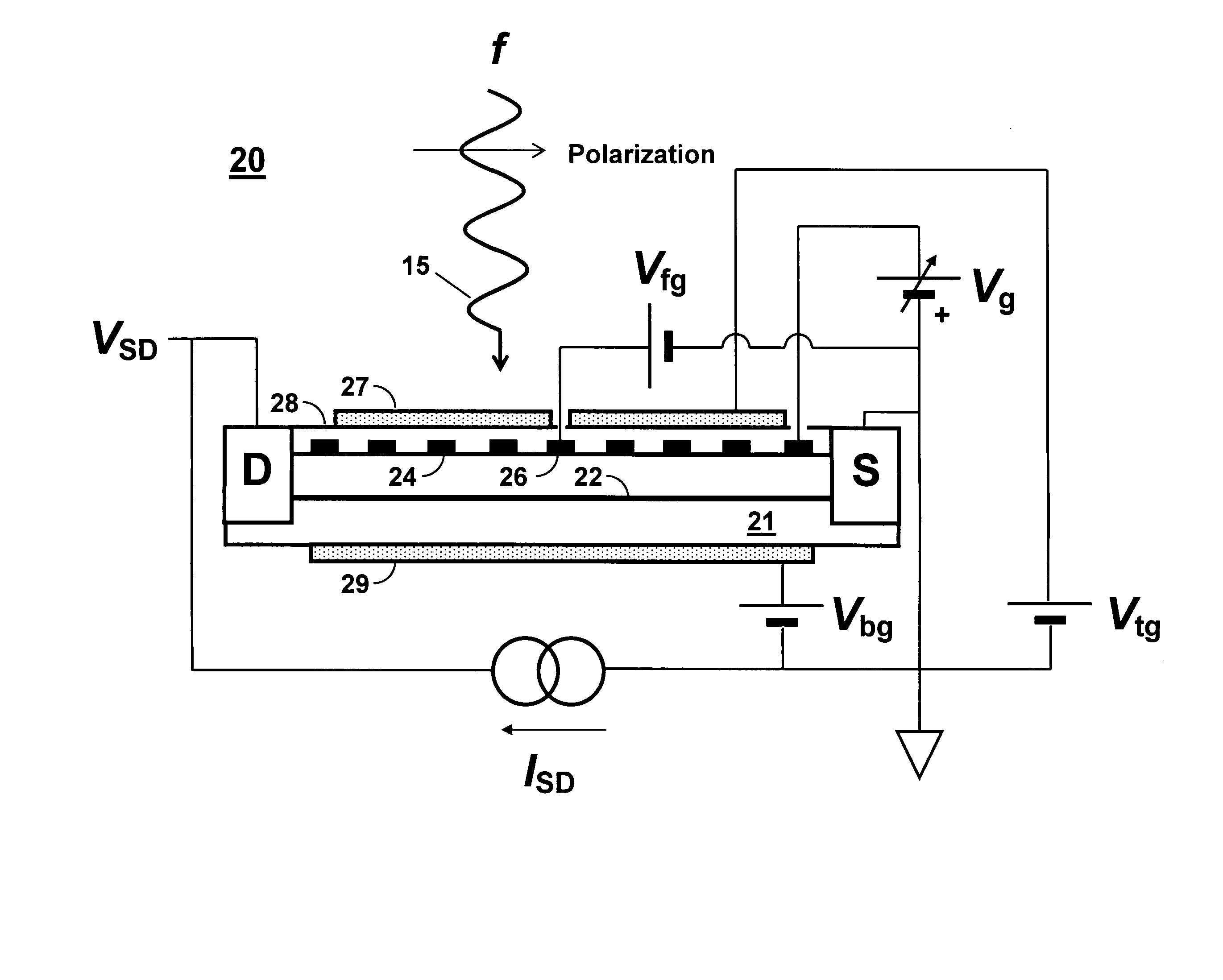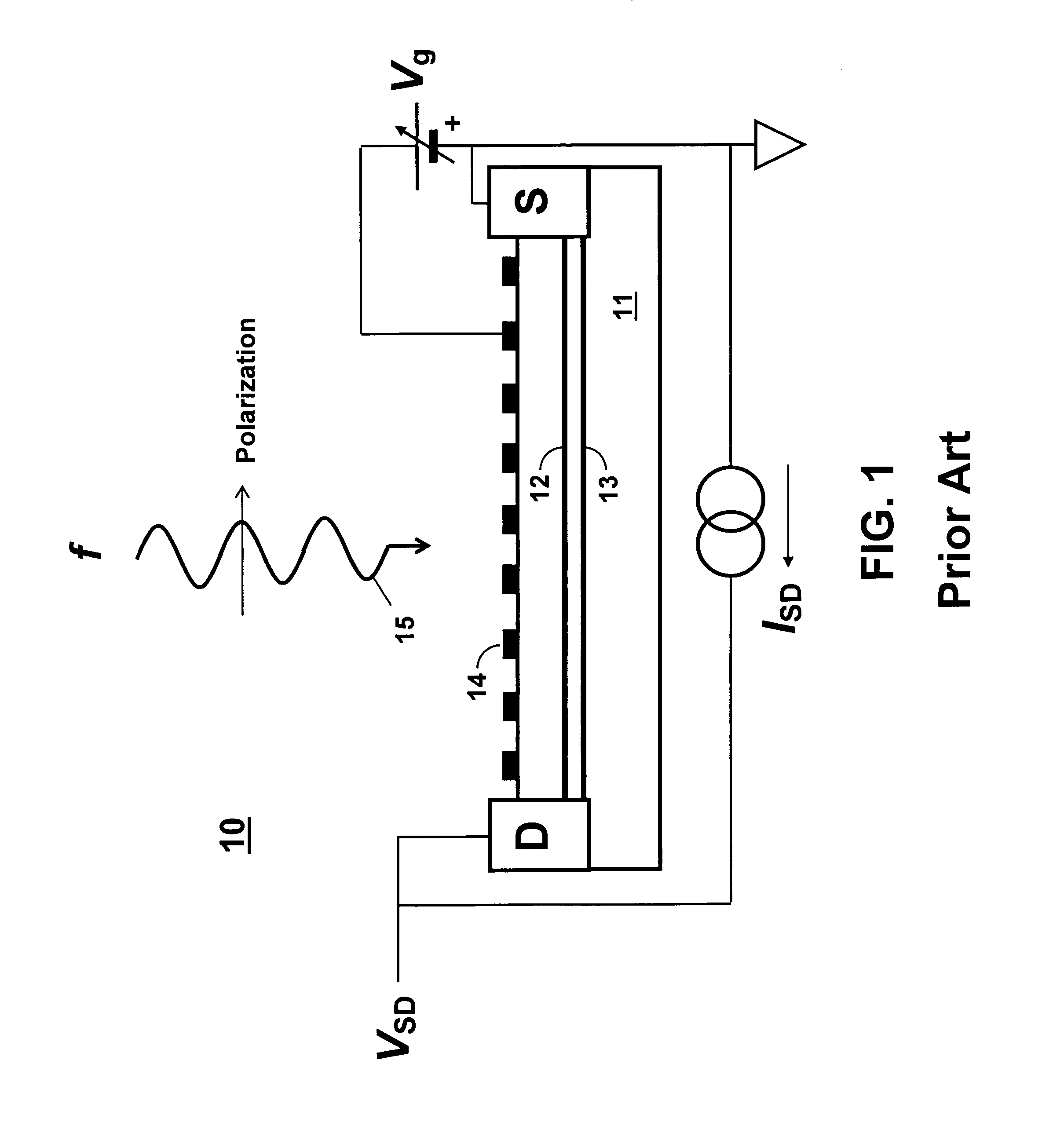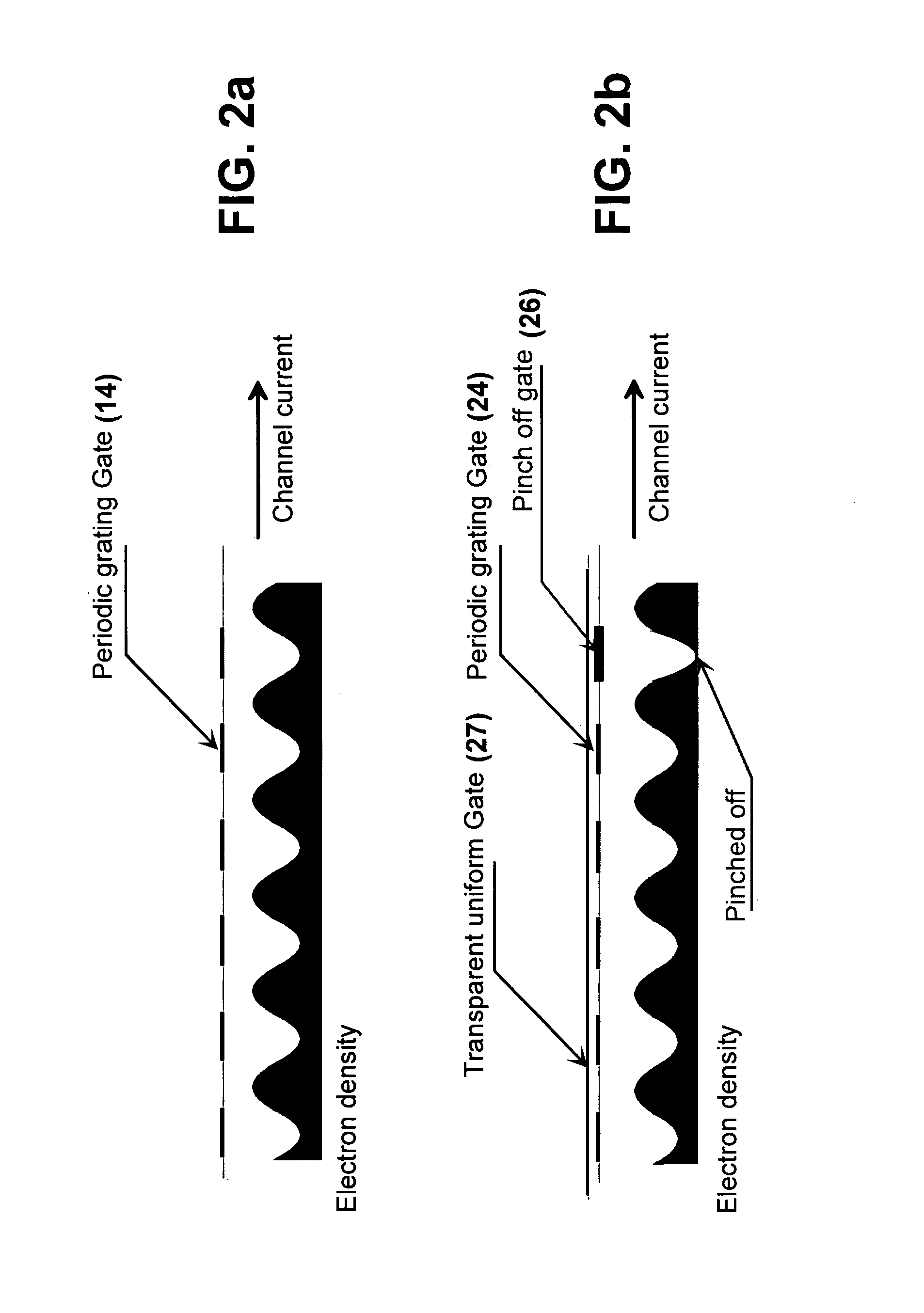Direct detector for terahertz radiation
a detector and terahertz radiation technology, applied in the direction of semiconductor devices, semiconductor/solid-state device details, electrical apparatus, etc., can solve the problems of terahertz components, terahertz applications have been hampered, and the application in the terahertz region is relatively undeveloped, so as to improve the performance of the detector, increase the bolometric responsivity, and improve the effect of detection performan
- Summary
- Abstract
- Description
- Claims
- Application Information
AI Technical Summary
Benefits of technology
Problems solved by technology
Method used
Image
Examples
Embodiment Construction
[0032]An embodiment of the direct detector of the present invention uses a heterostructure FET, similar to that of Peralta et al., but uses a split-grating gate designed to incorporate both the tunability offered by the grating gate and the enhanced responsivity seen in near-pinch-off operation. The split-grating gate concept is illustrated in FIG. 2b. The periodic grating gate 24 spatially modulates the electron density in the channel. A finger 26 of the split-grating gate can be individually biased to locally pinch off the channel, thereby making the device sensitive to temperature changes induced by resonantly absorbed terahertz radiation.
[0033]In FIG. 3 is shown a schematic top view illustration of a split-grating-gated FET direct detector 20, comprising a grating gate 24 that is split by an individually biased finger 26. In FIG. 4 is shown a schematic side view illustration of the split-grating-gated detector 20. The detector 20 has a surface metal gate 24 used to control the c...
PUM
 Login to View More
Login to View More Abstract
Description
Claims
Application Information
 Login to View More
Login to View More - R&D
- Intellectual Property
- Life Sciences
- Materials
- Tech Scout
- Unparalleled Data Quality
- Higher Quality Content
- 60% Fewer Hallucinations
Browse by: Latest US Patents, China's latest patents, Technical Efficacy Thesaurus, Application Domain, Technology Topic, Popular Technical Reports.
© 2025 PatSnap. All rights reserved.Legal|Privacy policy|Modern Slavery Act Transparency Statement|Sitemap|About US| Contact US: help@patsnap.com



